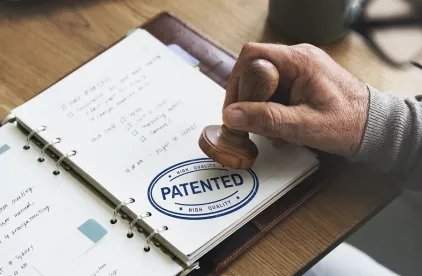In order to qualify as an inventor on a U.S. patent, a person must contribute to the conception of the invention as embodied in one or more of the claims—merely building or implementing the already-conceived technology is not enough. And, the failure to include every actual inventor invalidates the subject patent. In a recent case out of Massachusetts, the court was faced with resolving an inventorship dispute involving a computer networking patent.
Plaintiff Egenera filed a patent infringement action against defendant Cisco in August 2016, alleging that Cisco infringed Egenera’s U.S. Pat. No. 7,231,430 (“the ’430 patent”), which relates to virtual networking technology. The ’430 patent claims priority to a provisional filing dated April 20, 2001 and lists eleven inventors, including Peter Schulter, who joined Egenera on October 2, 2000.
Shortly after Egenera instituted the lawsuit, Cisco filed an inter partes review (“IPR”) petition at the Patent Office, contending that claims of the ’430 patent are obvious in view of various prior art—including one reference with a priority date of November 2, 2000. In response, Egenera argued that this reference did not constitute prior art because the ’430 patent was earlier conceived. In support of this position, Egenera produced an internal document dated September 29, 2000 that, in Egenera’s view, fully discloses the invention. Because the internal document predates Mr. Schulter’s employment, Egenera petitioned the U.S. Patent Office to remove him as an inventor. The Patent Office denied institution of the IPR without comment on the inventorship.
Cisco then sought to end the district court case via a motion for summary judgment, arguing that the court should find Mr. Schulter is an inventor and his exclusion invalidates the ’430 patent. Egenera countered with its own summary judgment motion, claiming Mr. Schulter is not an inventor and thus the patent is valid.
Before getting to the substance of the inventorship dispute, the court addressed Egenera’s assertion that if the court decides that Mr. Schulter should be restored as an inventor, the court should order correction of the patent. On this point, Judge Stearns explained that, in view of Egenera’s effort at the PTO to remove Mr. Schulter from the ’430 patent, judicial estoppel prevented Egenera from now taking the opposite position and seeking to re-include Mr. Schulter.
Turning to the substance of the parties’ inventorship claims, Cisco argued that Mr. Schulter conceived a virtual LAN proxy, embodied in the claims as “logic to modify said received messages to transmit said modified messages to the external communication network and to the external storage network.” In support of this contention, Cisco cited an Egenera document authored by Mr. Schulter in October 2000 that contains similarities to certain passages of text and figures in the ’430 patent.
Egenera claimed that Mr. Schulter merely worked on the reduction to practice of the virtual LAN proxy, and did not conceive it. Egenera pointed to three earlier documents authored by other inventors on the ’430 patent that, according to Egenera, disclosed the conception of the virtual LAN proxy.
In deciding the motion for summary judgment, Judge Stearns found that the claim term at issue requires message modification and message transmission to external networks. He concluded that the documents cited by Egenera disclose certain “controller modules” that interface between internal application nodes and the external communication network, but do not explicitly disclose message modification before transmission to the external network. However, certain elements in the documents (“local device numbers,” “simulated MAC addresses”) suggest message modification and transmission.
However, Cisco argued that the Egenera-cited documents fail to disclose any structure for performing the message modification and transmission functions. Judge Stearns acknowledged that neither the ’430 patent nor the Egenera documents specify any subcomponents for performing message modification and transmission. Further, he noted that the parties did not provide analysis of whether the use of a LAN server and LAN proxy to perform the functions were well-known or state of the art—thus rendering Mr. Schulter’s contribution as non-inventive.
Because a challenge to patent validity requires clear and convincing evidence, the court denied the parties’ respective motions for summary judgment on inventorship and set a bench trial for early 2019 to resolve the issue.
This decision reaffirms the importance of establishing all of the necessary facts surrounding conception and reduction to practice of an invention—including archival of any documentation that evidences each inventor’s contributions—as soon as possible, preferably prior to filing a patent application. Otherwise, there may be a disconnect when a resulting patent is later asserted, ending with loss of the patent.
The case is Egenera, Inc. v. Cisco Systems, Inc., Case No. 1:16-cv-11613-RGS (Dec. 3, 2018), before Judge Richard G. Stearns. A copy of the court’s order can be found here.



 />i
/>i

